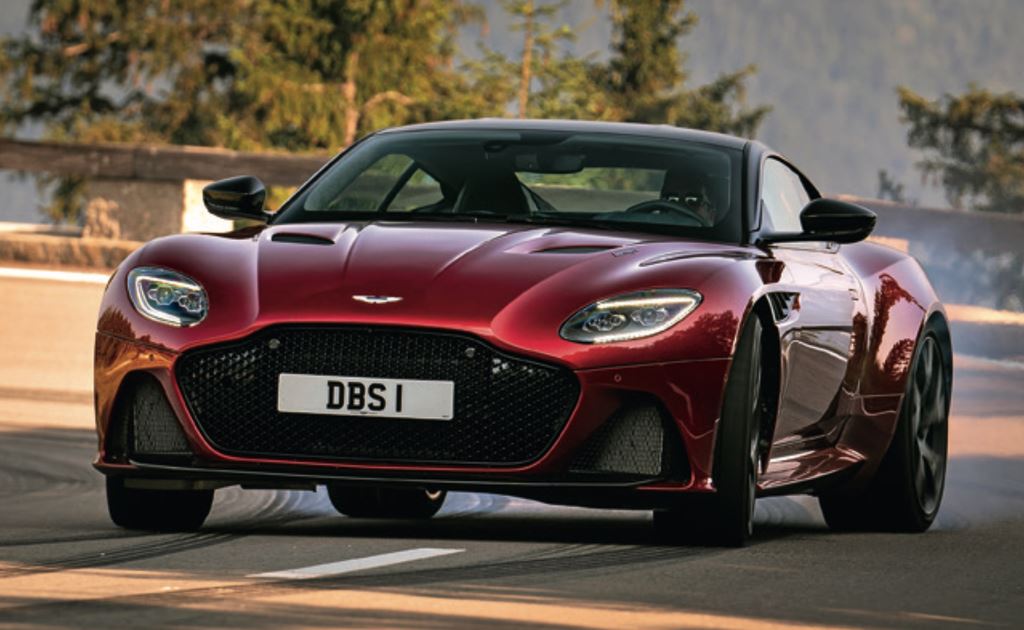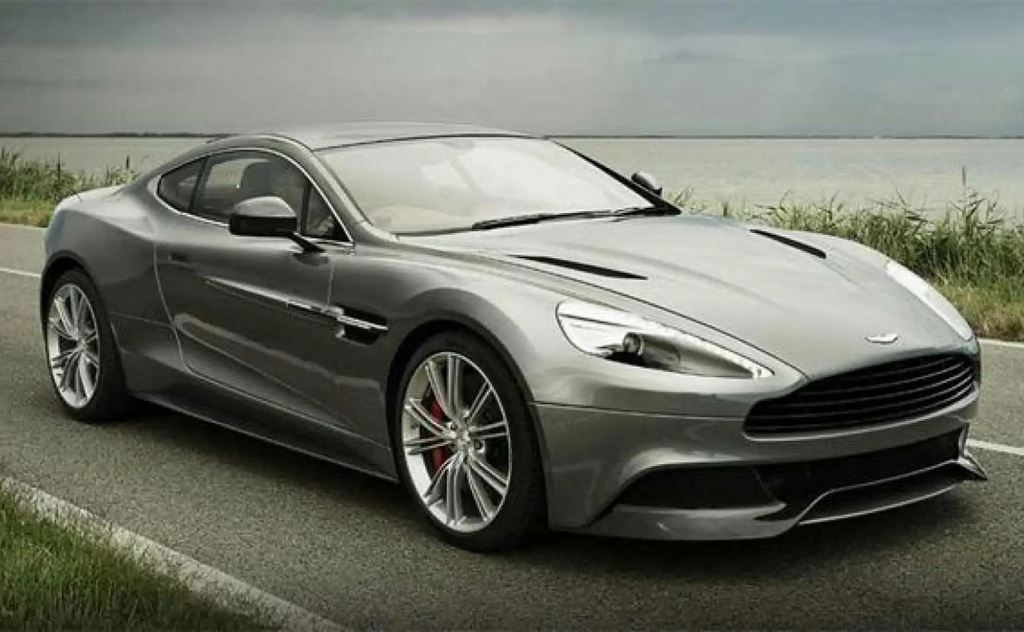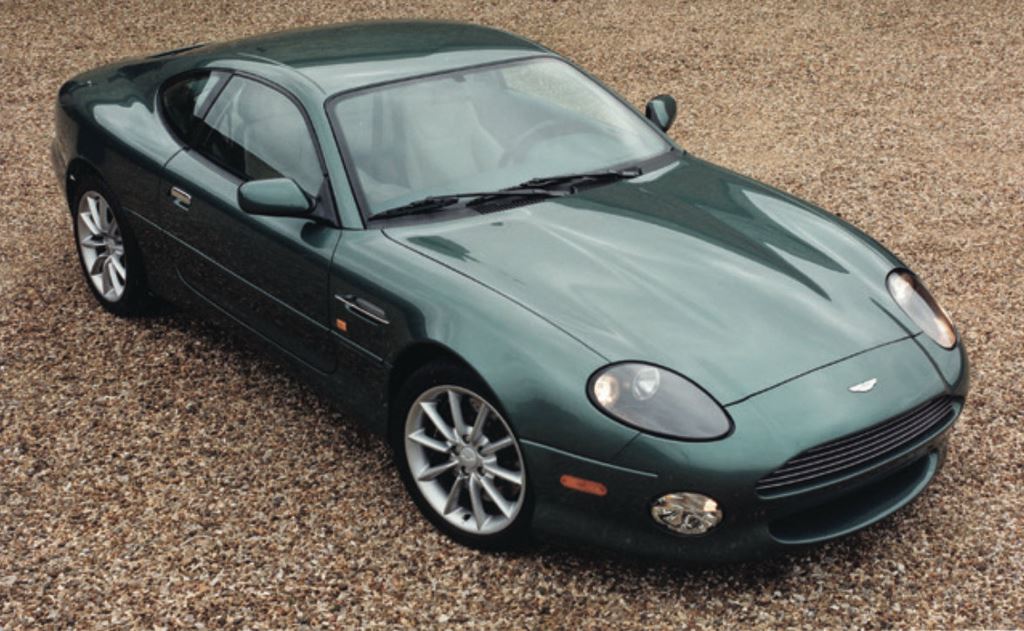There are video reviews available for many of the models in the list below. These videos are links to publicly available YouTube channels. Accessing these videos through our 'Review' links, skips the adverts at the start. 😀 We accept no responsibility for, or imply any agreement with, any of the views expressed by the reviewer(s).
Images and descriptions reproduced by kind permission of AutoVia - now Hothouse Media- (from Vantage magazine 2013-2021)
Road cars 2015 - present
Road cars 2000s
Road Cars 1970s-1990s |
Road Cars 1930s-1960s
Road cars 1920s - 1930s
DBX 2020-present ↑Top
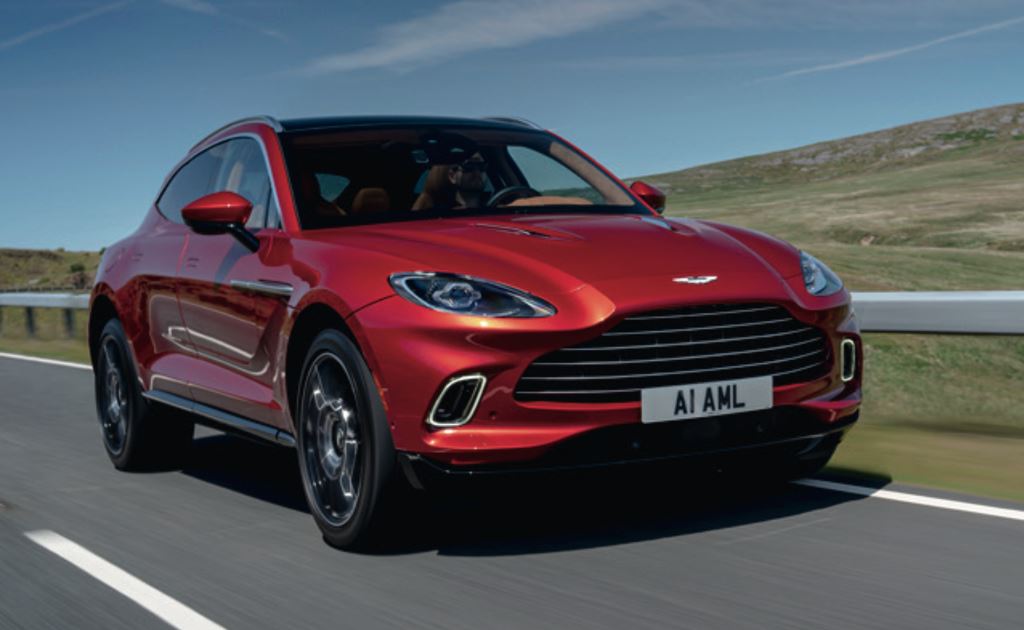
SPECIFICATION
Engine 3982cc, biturbo V8
Power 542bhp @ 6500rpm
Torque 516lb ft @ 2200rpm
0-60mph 4.3sec
Top speed 181mph
Ten years ago, an Aston Martin-badged SUV would have been almost unthinkable, but so far has the prestige car market moved that AML’s future prosperity now depends squarely on the success of this car. The first model to be built at Aston’s brand new plant at St Athan in South Wales, the DBX is powered by a tweaked version of the biturbo V8 shared with the Vantage, has a sophisticated four-wheel drive transmission, and carries up to five in considerable comfort. The best news, though, is that it still drives like an Aston.
DBS Superleggera 2018-present ↑Top

SPECIFICATION
Engine 5204cc, biturbo V12
Power 715bhp @ 6500rpm
Torque 664lb ft @ 1800rpm
0-60mph 3.5sec
Top speed 211mph
The fastest and most powerful series-production Aston yet, the DB11-based DBS Superleggera turns the wick on the twin-turbo V12 right up to 715bhp and adds a beefed-up eight-speed gearbox, carbon ceramic brakes and a heap more visual drama. More ‘super’ than ‘leggera’ at c.1700kg, it nevertheless grips and handles like a proper sports-GT and is mind bendingly rapid in a straight line. Replaced the Vanquish S as the production flagship and is one of the finest super-GTs currently on sale. Volante launched 2019.
Vantage (AM6) 2016-present ↑Top

SPECIFICATION
Engine 3982cc, biturbo V8
Power 503bhp @ 6000rpm
Torque 505lb ft @ 2000rpm
0-60mph 3.6sec
Top speed 195mph
Replacing the best-selling Aston of all time was a tough gig, but the all-new Vantage has the hardware and the firepower to make the previous model feel almost tame. With a twin turbocharged 4 litre 503bhp V8 supplied by Mercedes AMG and a lightning quick paddle shift gearbox (now joined by a traditional manual), the new car is rabidly quick and super-alert in its responses. This is an out and out sports car, and though the looks haven’t met with universal acclaim, as a drivers’ car it’s among the very best. Roadster launched 2020.
DB11 2016-present ↑Top
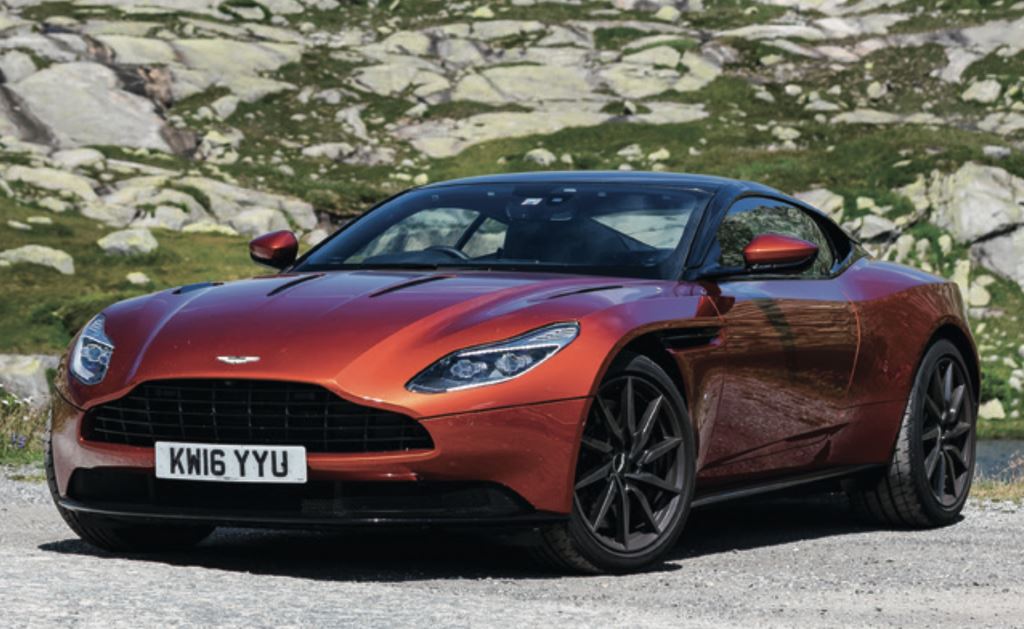
SPECIFICATION
Engine 5204cc, biturbo V12
Power 600bhp @ 6500rpm
Torque 516lb ft @ 1500rpm
0-60mph 3.7sec
Top speed 200mph
The first all-new production car of the Andy Palmer era, the DB11 was the most important new Aston since the DB9, the car it replaced. With a new platform, all-new twin-turbo 5.2-litre V12, a raft of new electronic systems courtesy of technology partner Daimler, and innovative aerodynamic features, it was the standard-bearer for Aston’s so-called Second Century Plan. V8 version was launched late 2017, with the Volante and a new, AMR-branded V12 flagship following in 2018.
Lagonda Taraf 2015-present ↑Top
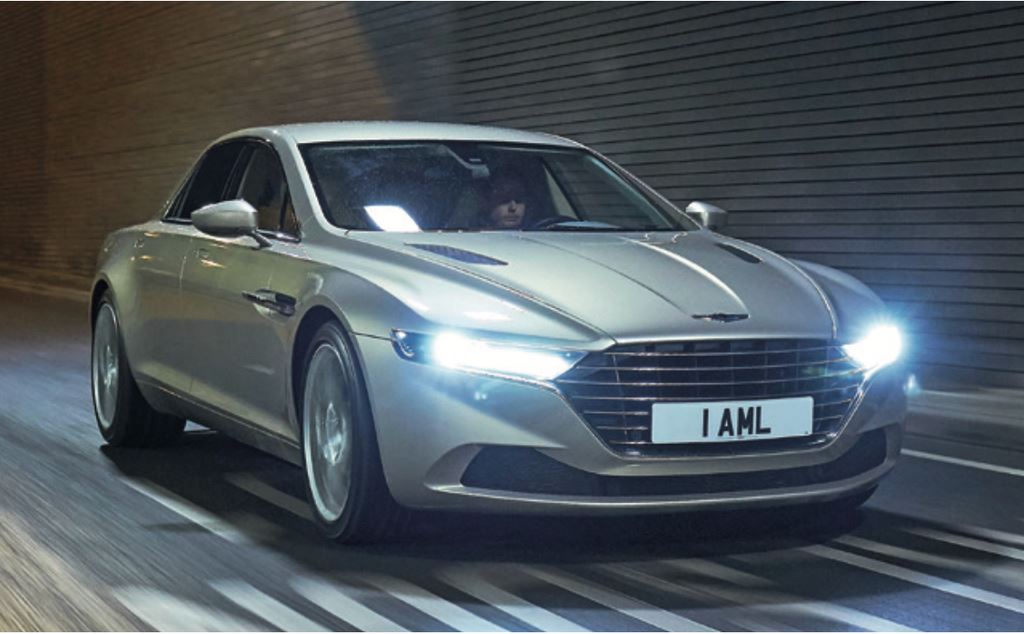
SPECIFICATION
Engine 5935cc, V12
Power 540bhp @ 6650rpm
Torque 465lb ft @ 5500rpm
0-60mph 4.4sec
Top speed 195mph
The Lagonda name hadn’t been seen since production of the controversial wedge shaped saloon ended in 1990, but in 2015 it was back, on a brand new luxury saloon and one that made more than a few visual nods to its famous forebear. Based on the Rapide S but with a longer wheelbase to make it a full four seater, the Taraf combined sumptuous accommodation with almost supercar levels of performance, but at a price with the addition of a few bespoke options, buyers saw little change from £800k.
Vanquish (VH3) 2012-2018 ↑Top

SPECIFICATION (2015MY)
Engine 5935cc, V12
Power 565bhp @ 6650rpm
Torque 465lb ft @ 5500rpm
0-60mph 3.6sec Top speed 201mph
The original Vanquish was a landmark car, and it was a brave move to resurrect the name for a new series-production flagship. If the new car wasn’t quite the same game changer, the combination of aggressively shaped carbon fibre bodywork, a 565bhp V12, adaptive damping and carbon brakes was still an intoxicating one. A Volante arrived in late 2013, and in late 2014 both versions got a refresh that included an eight-speed gearbox. Uprated Vanquish S with 592bhp (and similarly potent Zagato derivatives) launched late 2016.
Road Cars 2000s-2010s
VirageVirage (VH1) 2011-2012 ↑Top
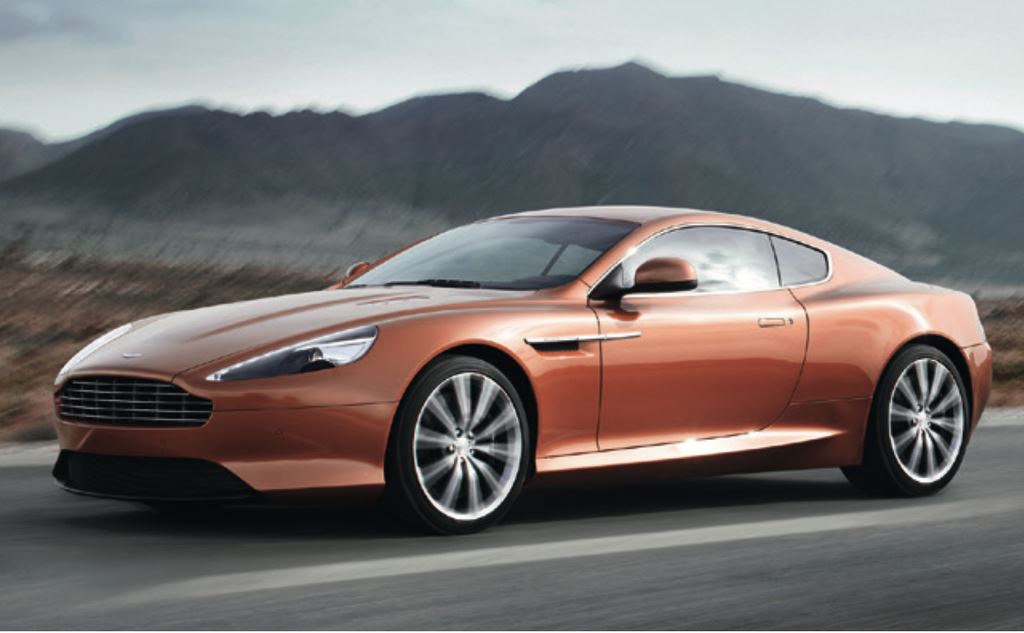
SPECIFICATION
Engine 5935cc, V12
Power 490bhp @ 6500rpm
Torque 420lb ft @ 5750rpm
0-60mph 4.5sec
Top speed 186mph
Bringing back a name from the 1990s, the 2011 Virage slotted into the range between the DB9 and the DBS and even avid Aston fans wondered if it wasn’t a variant too far. The idea was to sell a more aggressive car than the DB9 (but one that wasn’t as extreme as the DBS). All the panels except the roof were subtly restyled, while the V12 gained an extra 20bhp, though the overall feel was still very much GT. Sales were slow and the Virage name was soon dropped, the car effectively becoming the updated DB9 for 2013.
Cygnet 2010-2013 ↑Top
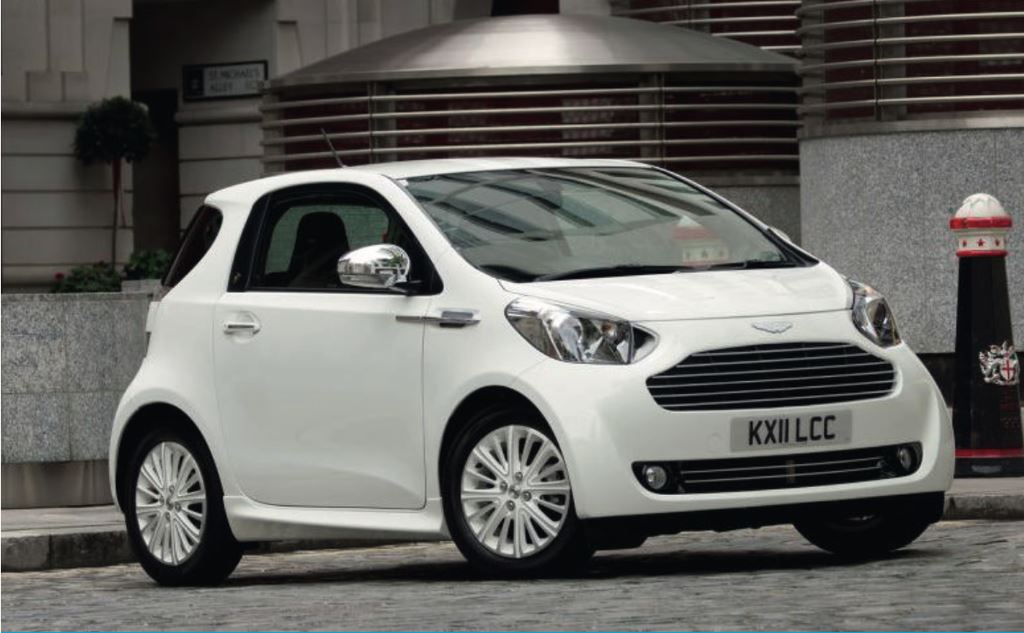
SPECIFICATION
Engine 1330cc, in-line 4-cyl
Power 97bhp @ 6000rpm
Torque 92lb ft @ 4400rpm
0-60mph 11.6sec
Top speed 106mph
Based on the Toyota iQ, the Cygnet was designed to deliver Aston levels of style and opulence in a city car. Extensively rebodied to incorporate familiar Aston design cues and retrimmed in sumptuous leather, but mechanically unchanged, it wasn’t without appeal as a city runabout but on the open road it was no performance car. At £30,995, it was also breathtakingly expensive. Ulrich Bez, whose baby it was, hoped it would sell by the thousand, but with just 670 sold it was quietly dropped in 2013.
One-77 2010-2012 ↑Top

SPECIFICATION
Engine 7312cc, V12
Power 750bhp @ 7600rpm
Torque 553lb ft @ 6000rpm
0-60mph 3.6sec
Top speed 220mph+
Aston’s answer to the Bugatti Veyron and Pagani Zonda hypercars was the One-77, a no-expense-spared, hand-built, all carbon fibre rocket ship with the world’s most powerful naturally aspirated engine (some have recorded an astonishing 772bhp) and an equally gobsmacking £1.15m price-tag. Strictly limited to 77 examples, the last was delivered in August 2012, though Aston retains one for PR work. The few who have been lucky enough to experience the One-77 describe it as challenging, rewarding and utterly thrilling.
Rapide / Rapide S 2009-2020 ↑Top
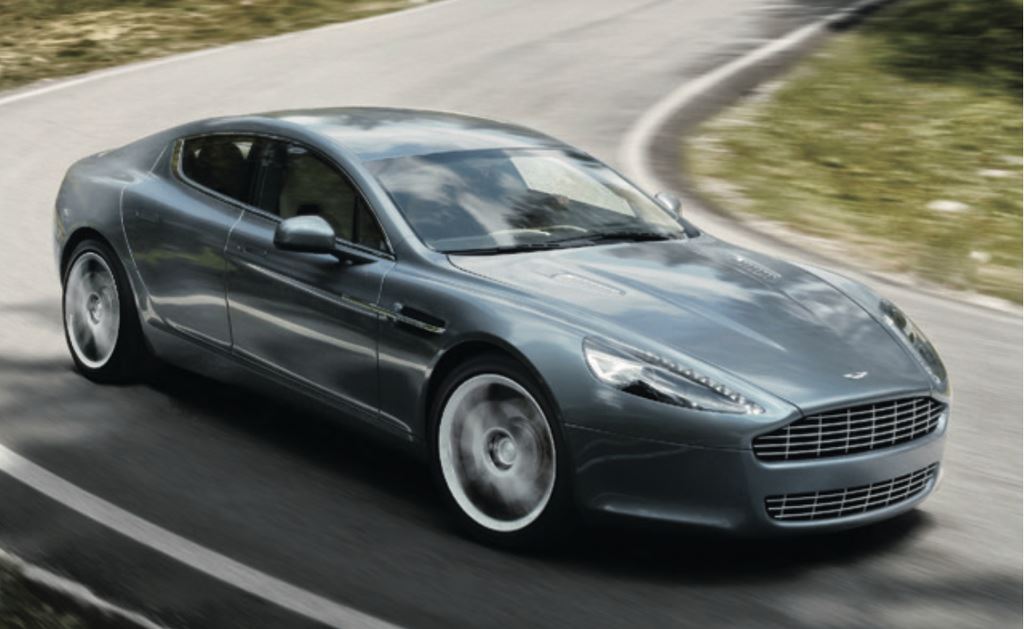
SPECIFICATION
Engine 5935cc, V12
Power 470bhp @ 6000rpm
Torque 443lb ft @ 5000rpm
0-60mph 5.0sec
Top speed 184mph
With Porsche enjoying success with its Panamera saloon and new markets opening up for luxury cars, it was only a matter of time before Aston spun a four seater saloon from its VH platform. The Rapide went into production in late 2009, initially at Magna Steyr in Austria. Despite (or perhaps because of) its sports car like dynamics, sales weren’t as strong as Aston hoped, and production moved to Gaydon in late 2012. Relaunched as the Rapide S for 2013 with a deeper new front grille and 550bhp.
V12 Vantage 2009-2018 ↑Top

SPECIFICATION
Engine 5935cc, V12
Power 510bhp @ 6500rpm
Torque 420lb ft @ 5750rpm
0-60mph 4.1sec
Top speed 190mph
Shoehorning the 5.9-litre V12 into the compact Vantage shell created one of Aston Martin’s finest drivers’ cars. Distinguished by its bonnet vents, the V12V built on the V8’s agility and added another level of performance and desirability. Roadster arrived in 2012 (just 101 built) and the 565bhp ‘S’ in 2013 – with a top speed of 205mph, it was the fastest series-production Aston so far. The total production number for all variants is just over 3000, including the Zagato version, just 63 of which were built.
DBS (VH3) 2007-2012 ↑Top
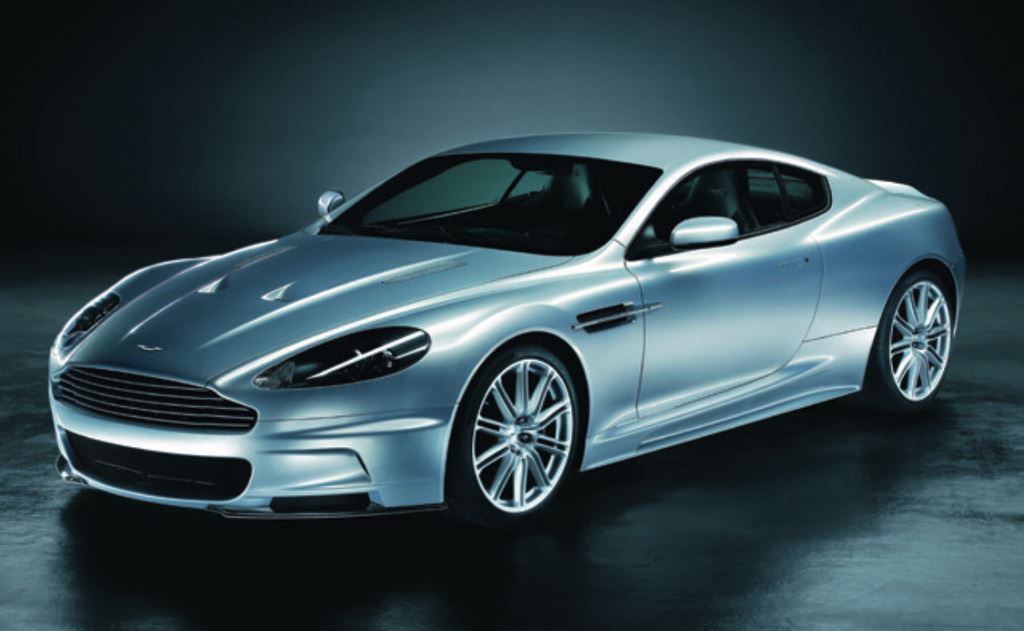
SPECIFICATION
Engine 5935cc, V12
Power 510bhp @ 6500rpm
Torque 420lb ft @ 5750rpm
0-60mph 4.2sec
Top speed 191mph
Resurrecting a name from the late ’60s, the DB9-derived DBS replaced the early-noughties Vanquish as the flagship production car in 2007 and gained extra cachet when it was adopted as 007’s company car when Daniel Craig debuted as Bond in Casino Royale. With power ramped up to 510bhp, aggressive styling and harder-edged dynamics, the DBS was Mr Hyde to the DB9’s Dr Jekyll. Early cars were manual only, and a Volante appeared in 2009. In all, 2,534 coupés were built, and 845 Volantes.
Road Cars 1990s-2000s
V8 Vantage (VH2) 2005-2018 ↑Top
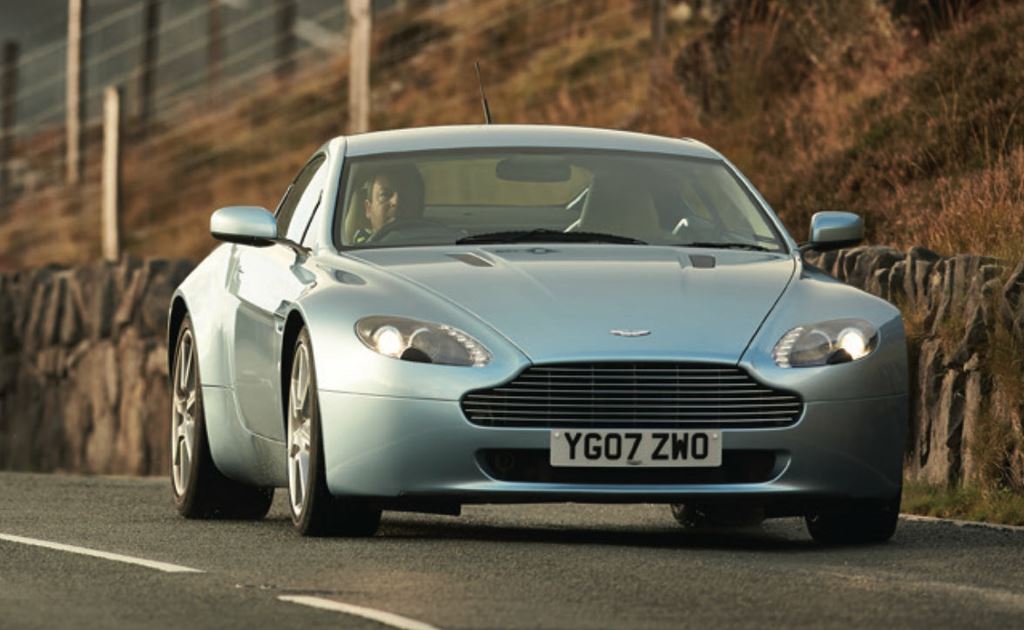
SPECIFICATION (4.3)
Engine 4281cc, V8
Power 380bhp @ 7000rpm
Torque 302lb ft @ 5000rpm
0-60mph 4.8sec
Top speed 175mph
Aston’s answer to Porsche’s 911 and originally conceived as a mid-engined car. Compact and more overtly sporting than the DB9, the Callum/Fisker styled V8 Vantage eventually overtook the DB9 to become the biggest seller yet, with more than 22,000 finding homes. Its Jaguar-derived quad-cam V8, originally a 4.3 (4.7 litres and 420bhp from 2008) gave brisk performance and an extrovert soundtrack best enjoyed in the Roadster, which arrived in 2007. The ‘S’, with 430bhp, came in 2011.
DB9 2004-2016 ↑Top
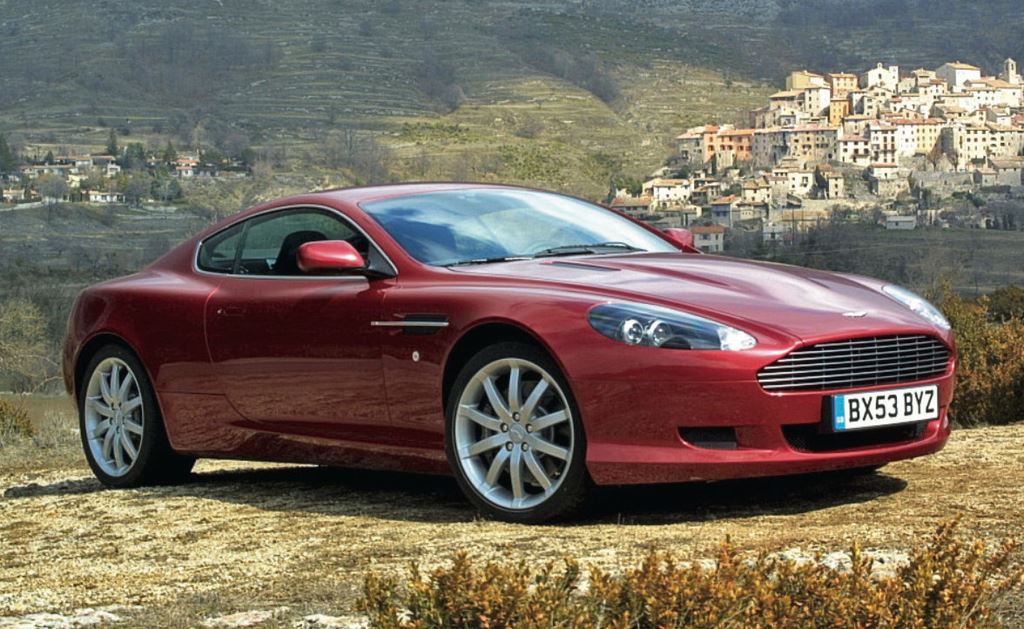
SPECIFICATION
Engine 5935cc, V12
Power 450bhp @ 6000rpm
Torque 420lb ft @ 5000rpm
0-60mph 4.6sec
Top speed 190mph
The DB9 was effectively the successor to the highly successful DB7 Vantage, with the latest version of the 5.9-litre V12, a Touchtronic auto option, and the first appearance of the largely aluminium ‘VH’ platform, all clothed in another gorgeous Ian Callum body, refined by his successor, Henrik Fisker. It was also the first Aston to be built at Gaydon. Volante arrived in 2005 and in 2008 power grew to 470bhp. For 2013 the car was given a major refresh, now with 510bhp. End-of-line GT version had 540bhp.
Vanquish / Vanquish S 2001-2007 ↑Top
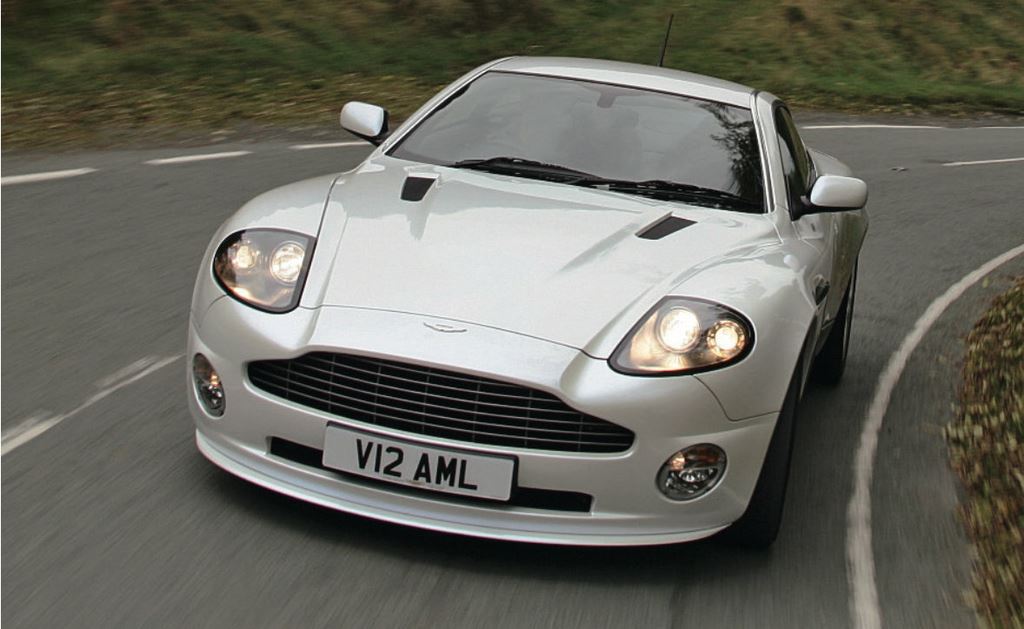
SPECIFICATION
Engine 5935cc, V12
Power 460bhp @ 6500rpm
Torque 400lb ft @ 5000rpm
0-60mph 4.5sec
Top speed 190mph
While DB7s were rolling out of a new factory at Bloxham, back at Newport Pagnell an all-new flagship model was in development. Launched in summer 2001, the Ian Callum-penned Vanquish had a 460bhp version of the V12 engine and a bonded aluminium platform. The automated paddleshift manual gearbox was criticised initially for its slow responses. This was improved, as was the handling, for the 520bhp Vanquish S launched in 2004. A total of 1,502 standard cars and 1,086 ‘S’s were sold.
DB7 Zagato & AR1 2003-2004 ↑Top

SPECIFICATION
Engine 5935cc, V12
Power 440bhp @ 6500rpm
Torque 440lb ft @ 5000rpm
0-60mph 4.7sec
Top speed 190mph
The Zagato was based on a shortened DB7 Chassis with the body designed and manufactured at the Zagato factory in Italy. The AR1 (shown) is a roadster designed for the Californian climate (AR = American Roadster). Both models have the Zagato 'double bubble' on the rear and productions was limited to 100 of each.
DB7 V12 Vantage 1999-2003 ↑Top

SPECIFICATION
Engine 5935cc, V12
Power 420bhp @ 6000rpm
Torque 400lb ft @ 5000rpm
0-60mph 4.9sec T
op speed 185mph
The DB7 was given a major fillip in 1999 with the launch of the Vantage model, its styling beefed up by Ian Callum and with the first appearance of a brand-new 5.9-litre V12 engine that would go on to power the next generation of flagship Aston Martins. With reworked suspension too, the Vantage was a significant step on from the six-cylinder DB7 but cost just a few thousand pounds more – it was no surprise that sales of the standard car dried up and it was quickly phased out. The desirable run-out Vantage GT had 435bhp.
V8 Coupé 1996-1999 ↑Top
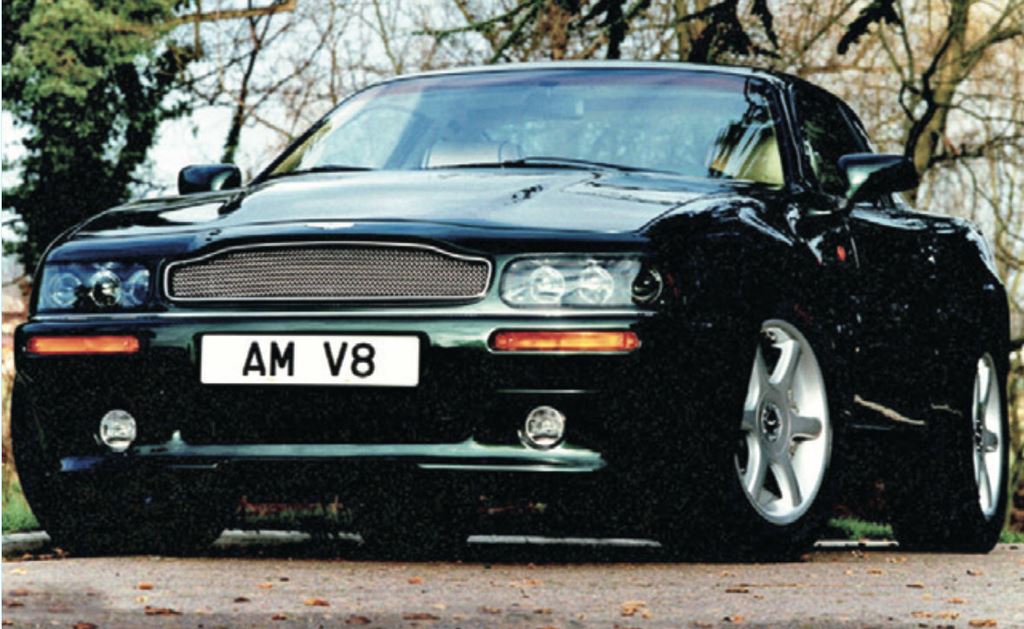
SPECIFICATION
Engine 5340cc, V8
Power 349bhp @ 6000rpm
Torque 369lb ft @ 3700rpm
0-60mph 5.9sec
Top speed 155mph+
With the Virage running out of steam in the mid-1990s, Aston Martin relaunched the model as the V8 Coupé – basically a Virage with revised bodywork inspired by the new twin-supercharged Vantage model, including its faired-in headlamps and four round tail-lights. Power was slightly up, the acceleration slightly sharper and the top speed was quoted, not terribly helpfully, as ‘over 155mph’. An improvement in almost every way over the Virage, sales were, however, glacially slow. Just 101 Coupés and 63 Volantes were sold.
DB7 1994-1999 ↑Top

SPECIFICATION
Engine 3228cc, in-line 6, s/c
Power 335bhp @ 5750rpm
Torque 361lb ft @ 3000rpm
0-60mph 5.8sec
Top speed 157mph
Aston couldn’t survive building handfuls of hand-built supercars; a more affordable model was needed. Ford, who had bought a majority share in AML in 1987, knew this and in 1994 launched the Ian Callum-styled DB7 – evoking memories of the 1960s DB cars – with a supercharged 3.2-litre straight-six and a steel monocoque that had its origins at Jaguar. A Volante followed in 1996. Sales of all variants (including the Vantage) eventually topped 7,000, making it by far the most numerous Aston at that point.
Road Cars 1970s-1990s
Vantage (supercharged) 1993-2000 ↑Top
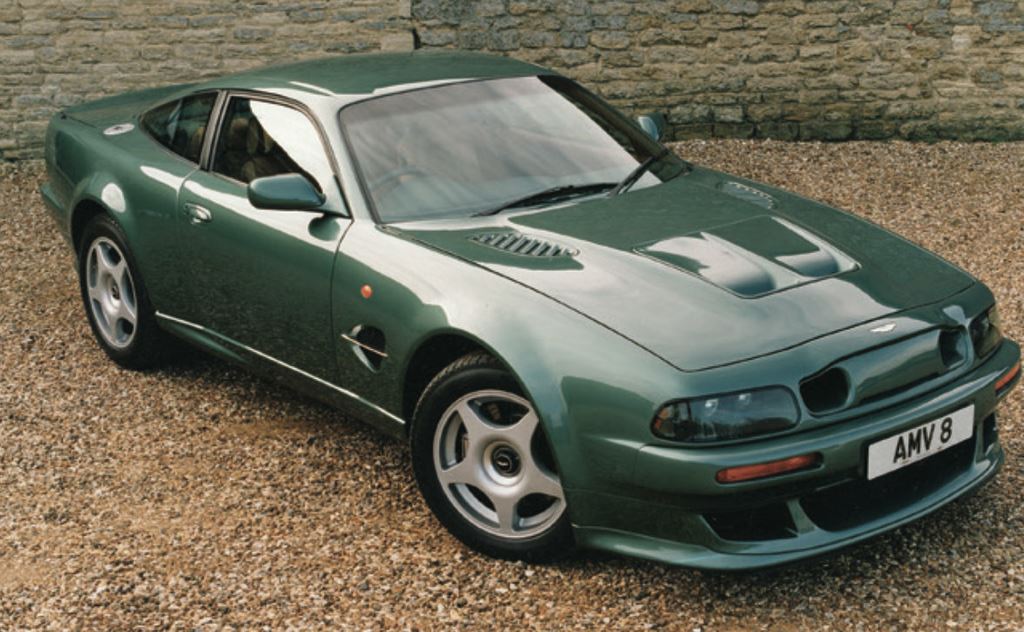
SPECIFICATION
Engine 5340cc, V8, twin s/c
Power 600bhp @ 6200rpm
Torque 600lb ft @ 4400rpm
0-60mph 4.6sec
Top speed 190mph+
Works’ 6.3-litre V8 had shown the appetite for a faster Virage, and in 1993 came the full-house Vantage, extensively restyled (only roof and doors were carried over) with a twin-supercharged version of the 5.3-litre engine providing 550bhp and 550lb ft – at the time the most powerful production engine in the world. In 1998 came the V600, with an additional 50bhp – enough to propel this near-two- ton monster to a reported 200mph. A final run of 40 ‘Le Mans’ editions brought total production to 279.
Virage 1989-1996 ↑Top
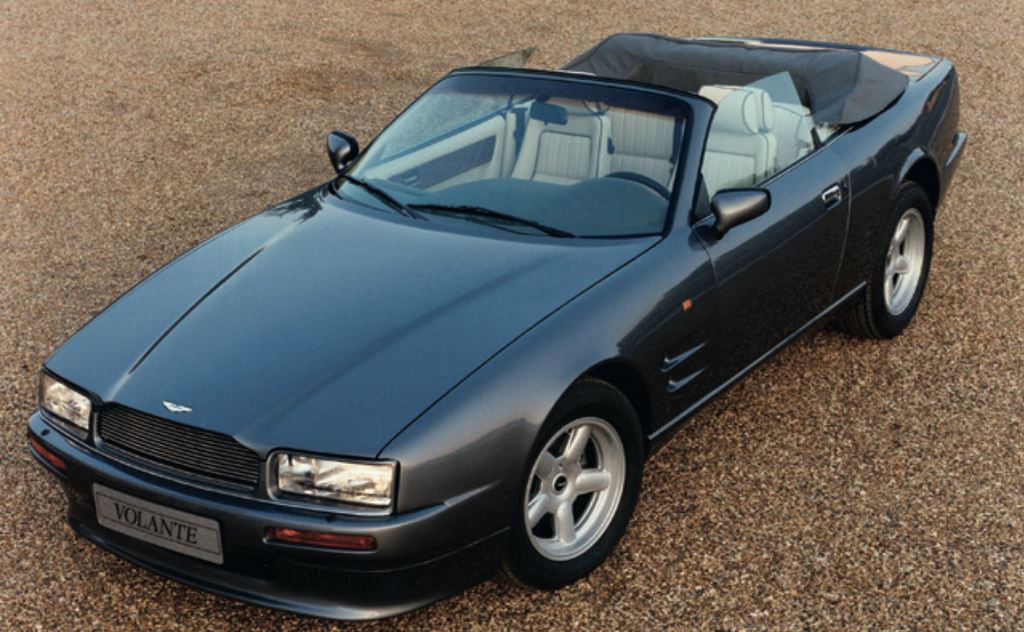
SPECIFICATION
Engine 5340cc, V8
Power 330bhp @ 6000rpm
Torque 350lb ft @ 3700rpm
0-60mph 6.0sec T
op speed 155mph
By the mid-’80s the AM V8 was living on borrowed time, and, under the direction of Victor Gauntlett, Aston began work on a replacement. The Virage was largely still based on the V8, but its new body (by John Heffernan and Ken Greenley), an updated 32-valve fuel-injected V8 and other refinements were enough to give Aston new impetus. In 1992 came the Volante version and also a Works-developed 500bhp 6.3 monster with widened bodywork. Sales of all variants reached 1,050.
V8 Zagato 1986-1989 ↑Top
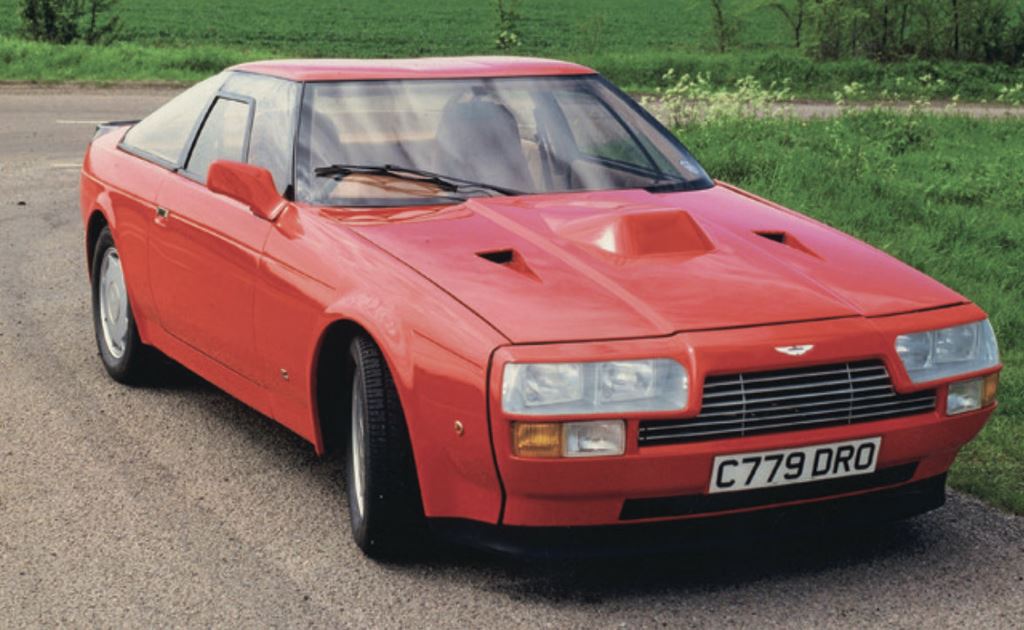
SPECIFICATION
Engine 5340cc, V8
Power 432bhp @ 6250rpm
Torque 400lb ft @ 5000rpm
0-60mph 4.8sec
Top speed 186mph
Resurrecting the partnership with Italian design house Zagato in the mid-’80s was a masterstroke by Aston’s then-boss Victor Gauntlett, especially when all 50 coupés were immediately snapped up at £87,000 a pop (37 Volante convertibles were also built). The ’80s Zagato couldn’t match the beauty of the ’60s original, but its performance was sensational. Based on the V8 Vantage but with even more power and considerably lighter, it broke 5 sec to 60mph and was verified at 185.8mph, making it the fastest Aston yet.
Production Numbers:
Vantage Zagato: 51 (Chassis No. 20010 to 20061 excluding 20042 which was built as the Volante Zagato Prototype).
Volante Zagato: 38 (1 x Prototype 20042 + 37 x Production 30007 to 30045 excluding 30033 and 30034 not used).
Lagonda (series 2-4) 1978-1990 ↑Top

SPECIFICATION
Engine 5340cc, V8
Power 280bhp @ 5500rpm
Torque 301lb ft @ 3000rpm
0-60mph 8.8sec
Top speed 143mph
One of the most extraordinary cars ever to reach production, the William Towns-designed Lagonda caused a sensation when it was unveiled in 1976. Its advanced but troublesome electronics delayed production for almost two years and the price was stratospherically high, but it eventually found a market in the Middle East and stayed in production for more than a decade, during which 645 were sold. Under the bonnet was the familiar V8, its performance somewhat blunted by the two-ton kerb weight.
V8 Vantage 1977-1989 ↑Top

SPECIFICATION
Engine 5340cc, V8
Power 375bhp @ 5500rpm
Torque n/a
0-60mph 5.3sec
Top speed 170mph
Often described as ‘Britain’s first supercar’, the Vantage of 1977 was based on the AM V8 but was now a model-line in its own right. With a 375bhp version of the 5.3-litre V8 (later 410bhp) and a top speed of 170mph, it was pitched head-to-head with the Ferrari BB and Lamborghini Countach for the title of world’s fastest car. With its blanked-off grille and bonnet scoop, deep air dam and boot lid spoiler, it certainly looked the part. When production ended in 1989, 534 had been built, 192 of them Volantes.
Lagonda (series 1) 1974-1976 ↑Top

SPECIFICATION
Engine 5340cc, V8
Power 280bhp @ 5500rpm
Torque 301lb ft @ 3500rpm
0-60mph 6.2sec
Top speed 149mph
Based on the AM V8 but with a stretched wheelbase, the 1974 Lagonda saloon was the first car since the 1961 Rapide to wear the Lagonda badge, and it was not a success. Most of the blame can be attached to the 1974 oil crisis which seriously limited the appeal of any V8-powered super saloon, let alone one that would rarely see mpg in double figures. In fact the Lagonda was an impressive and capable machine, but during the two years of production just seven were sold (though another was later assembled from parts).
Road Cars 1960s-1970s
AM V8 1972-1990 ↑Top
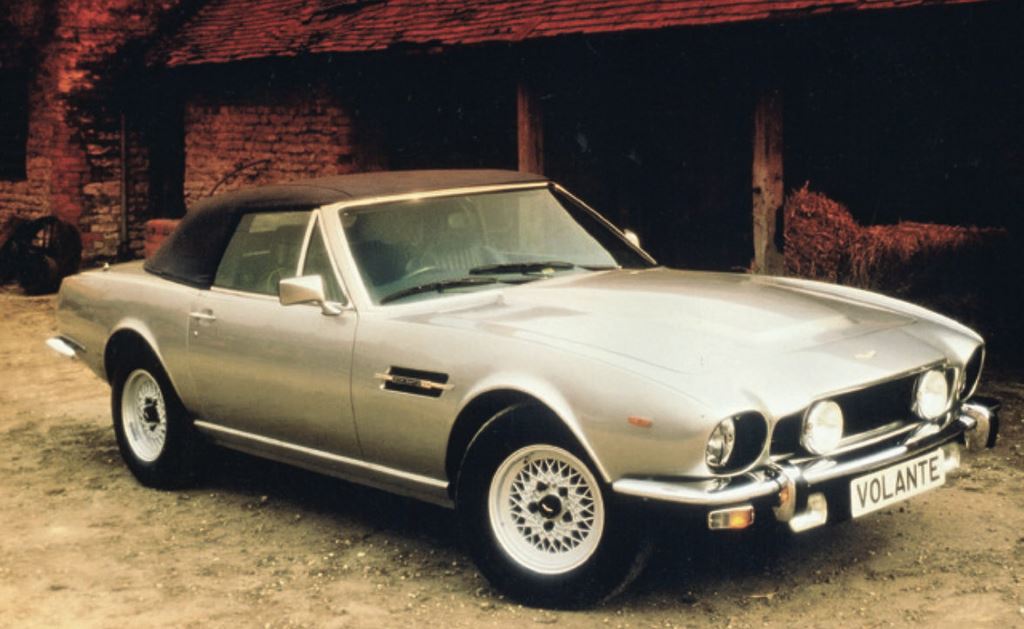
SPECIFICATION
Engine 5340cc, V8
Power 310bhp @ 5500rpm
Torque 360lb ft @ 3500rpm
0-60mph 5.7sec
Top speed 155mph
If the ’60s were Aston’s golden era, the ’70s saw the glow fade with frequent financial crises. David Brown had sold up, so the DBS V8 became the AM V8, while the mechanical fuel injection system was dropped in favour of four Weber carburettors. Early cars had around 310bhp, but emissions regs saw that figure diminish through the decade. Volante arrived in 1978, electronic fuel injection in 1986. In its various guises, the V8 would soldier on for almost 20 years, in which time 4,021 were built.
DBS / DBS V8 1967-1972 ↑Top

SPECIFICATION
Engine 3995cc, in-line 6
Power 282bhp @ 5500rpm
Torque 288lb ft @ 3850rpm
0-60mph 8.4sec
Top speed 140mph
The DBS ushered in a whole new look for Aston, its modern lines the work of Englishman William Towns. It was also supposed to introduce Tadek Marek’s all-new 5.3-litre V8 engine, but that wasn’t ready in time, so the DBS was launched with the familiar straight-six from the DB6 (the two models ran concurrently for three years). The 310bhp V8 was finally available from 1969, but the six-cylinder continued until 1972 as the entry-level Aston. Some 787 six-cylinder DBSs were produced, and 402 V8s.
DB6 1965-1971 ↑Top

SPECIFICATION
Engine 3995cc, in-line 6
Power 282bhp @ 5500rpm
Torque 288lb ft @ 3850rpm
0-60mph 8.4sec
Top speed 150mph
A longer wheelbase and extended roofline – ending in a distinctive cut-off ‘Kamm’ tail – made the DB6 a decent four-seater, while its slightly heavier build, softer ride and the options of an automatic gearbox and air-con showed that the DB line was now firmly in GT territory. The base engine was carried over from the DB5, though the Vantage now produced a claimed 325bhp. Volante came in 1966. The Mk2, which arrived in July 1969, had flared wheelarches over wider wheels. Total production: 1,967.
DB5 1963-1966 ↑Top

SPECIFICATION
Engine 3995cc, in-line 6
Power 282bhp @ 5500rpm
Torque 288lb ft @ 3850rpm
0-60mph 8.0sec
Top speed 145mph
Really another evolution of the DB4 (it would have been Series 6), the DB5 is revered in its own right – and famous above all other Astons – wholly because of its role in the James Bond film franchise. New was the 4-litre engine and the option of a five-speed gearbox, which soon became standard. Regular DB5s had 282bhp, the Vantage 314bhp. The Convertible version was succeeded in 1965 by the ultra-rare ‘Short Chassis Volante’ model, the first use of the Volante name. Total production: 1,023.
Lagonda Rapide 1961-1964 ↑Top

SPECIFICATION
Engine 3995cc, in-line 6
Power 236bhp @ 5000rpm
Torque 265lb ft @ 4000rpm
0-60mph 9.0sec
Top speed 130mph
David Brown had bought Lagonda in 1947, shortly after buying Aston Martin. He wanted it chiefly for its Bentley-designed straight- six engine, but production of the pre-DB Lagonda models continued until 1958. The Lagonda name then vanished for several years, but in 1961 it reappeared on a new four-door saloon based on the DB4 but with the 4-litre engine that would soon power the new DB5. The Rapide (an old Lagonda model name) was fast and capable but the front styling was awkward and only 55 were sold in four years.
DB4 GT/GT Zagato 1959-1963 ↑Top
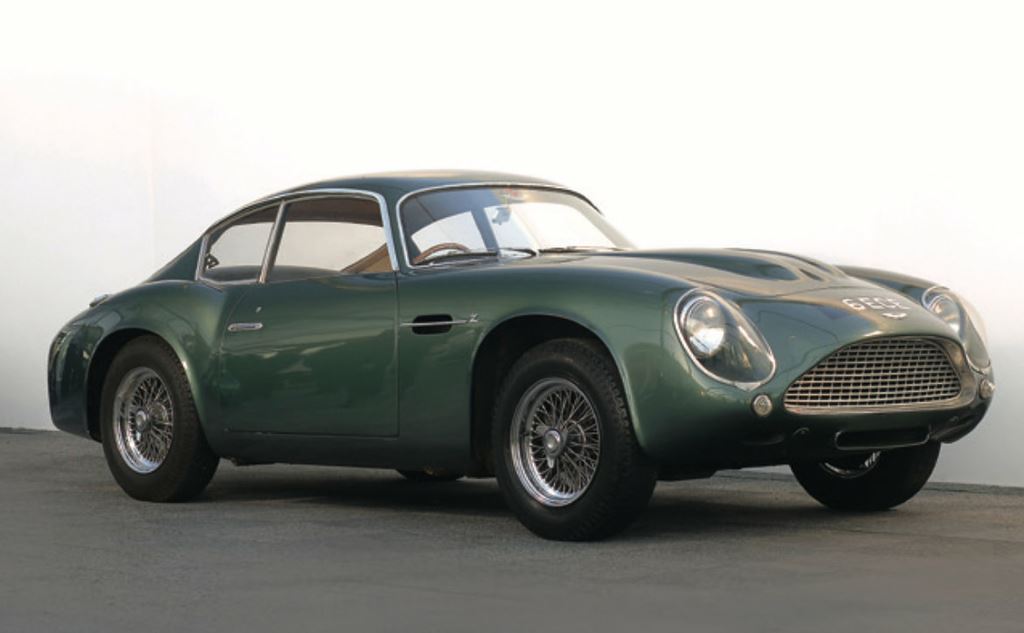
SPECIFICATION
Engine 3670cc, in-line 6
Power 314bhp @ 6000rpm
Torque 278lb ft @ 5400rpm
0-60mph 6.1sec T
op speed 154mph
In 1959, Aston introduced the DB4 GT, a lighter, short-wheelbase competition version of the DB4 with a twin-plug 302bhp engine. A number of chassis were also sent to Zagato to be clothed in even lighter aluminium bodywork, while further tuning lifted peak power to 314bhp. These Zagatos today command vast sums at auction. Incredible to tell, then, that the original planned run of 25 was reduced to 20 because of lack of take-up. The unused chassis numbers were eventually recycled in the ’90s as the ‘Sanction’ cars.
Road Cars 1930s-1960s
DB4 1958-1963 ↑Top
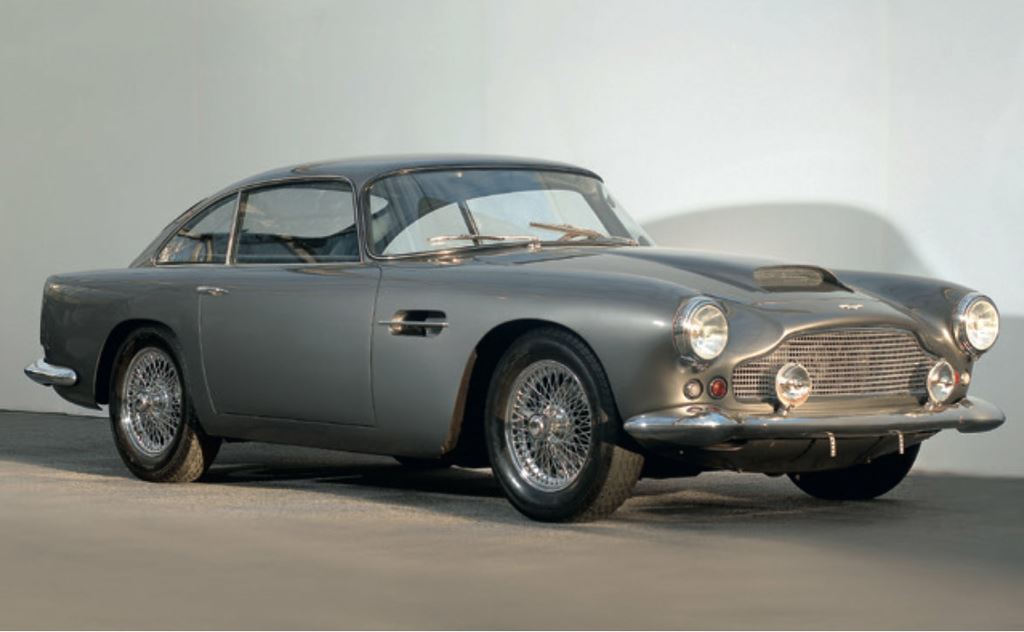
SPECIFICATION
Engine 3670cc, in-line 6
Power 240bhp @ 5500rpm
Torque 240lb ft @ 4250rpm
0-60mph 9.0sec
Top speed 140mph
The definitive Aston shape was born with the DB4, the work of Italian design house Touring, whose ‘Superleggera’ construction involved aluminium bodywork wrapped around a steel skeleton frame. The DB4 also introduced a new, Tadek Marek-designed all-alloy twin-cam straight-six, originally in 240bhp 3.7-litre form. In all there were five series of DB4s, each adding subtle refinements to the original formula. Vantage versions saw power rise to 266bhp. Total production: 1,210.
DB MkIII 1957-1959 ↑Top
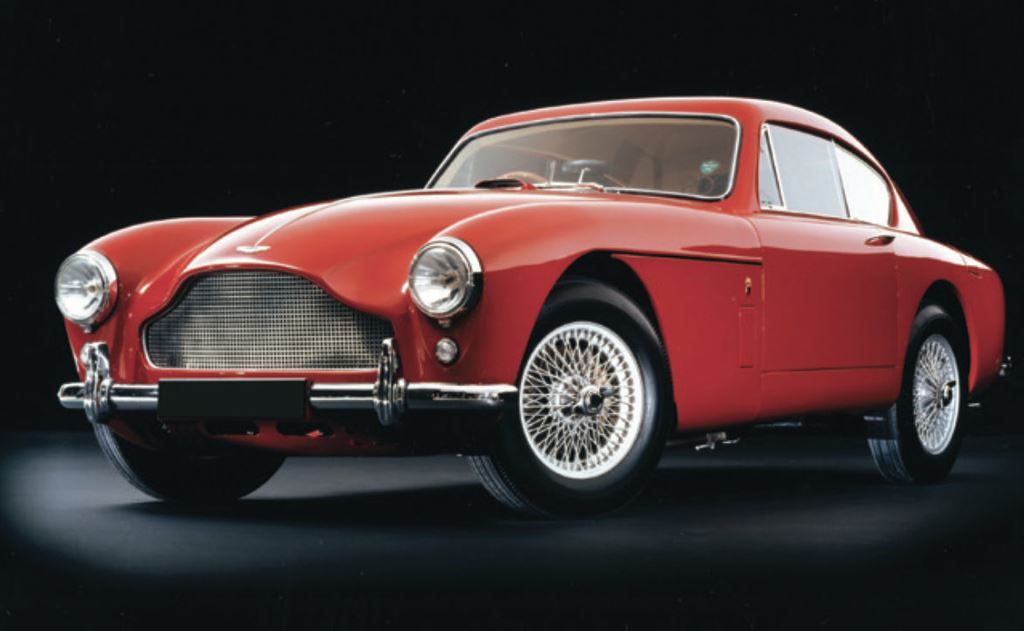
SPECIFICATION
Engine 2922cc, in-line 6
Power 162bhp @ 5500rpm
Torque n/a
0-60mph 9.3sec
Top speed 120mph
The MkIII (note: not DB3) was effectively the third series of the DB2/4, but Aston dropped the ‘2/4’ bit for its 1957-1959 range of coupés, dropheads and fixed-heads. The lines were smoother and more purposeful, the grille previewing decades of Astons to come, and even in its lowliest tune the LB6 was now making well over 150bhp (up to 190bhp on triple Webers). The MkIII actually overlapped with the introduction of the DB4 by several months, and total production hit 551.
DB2/4 1953-1957 ↑Top
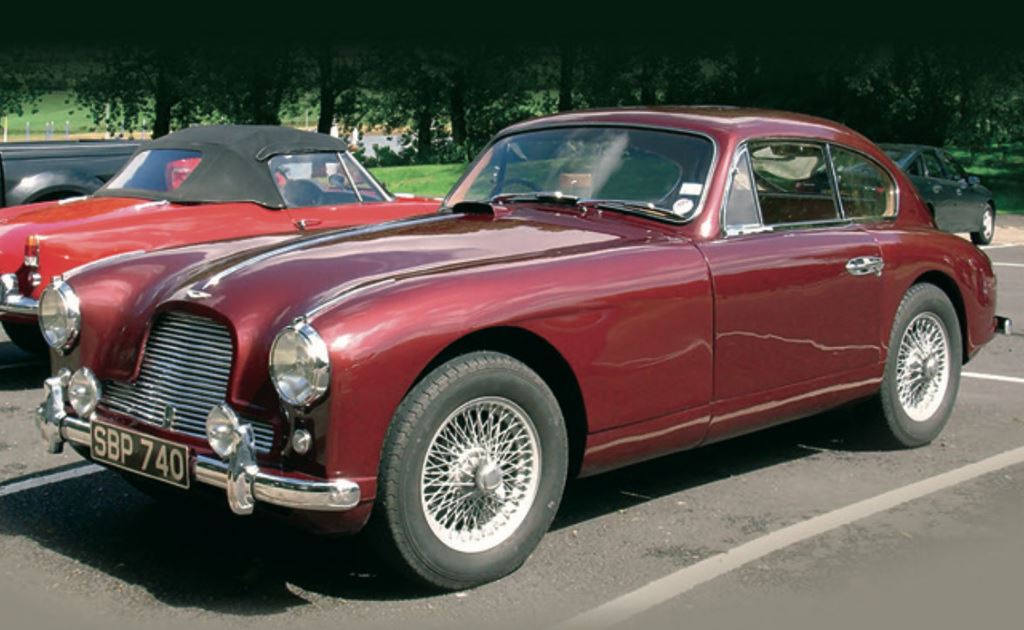
SPECIFICATION
Engine 2922cc, in-line 6
Power 140bhp
Torque n/a
0-60mph 10.5sec
Top speed 120mph
The ‘4’ tacked onto the end of the DB2’s title denotes the addition of two extra seats. The 2+2 seating was made more habitable by a higher rear roofline, and there was a handy ‘hatchback’ too. The extra weight slightly took the edge off the performance, so Aston boosted capacity to 2.9 litres in 1954, taking power to 140bhp. The MkII of 1955 incorporated a rear-end restyle and there was also a rare ‘notchback’ fixed-head coupé version of the drophead. Around 750 DB2/4s were produced in total.
DB2 1950-1953 ↑Top

SPECIFICATION
Engine 2580cc, in-line 6
Power 105bhp
Torque n/a
0-60mph 12.4sec
Top speed 116mph
The DB2 was the first officially to wear the initials of Aston’s new owner, David Brown. It also featured the marque’s first six-cylinder engine – in fact a Lagonda unit designed under WO Bentley and picked up when Brown acquired Lagonda shortly after bagging Aston. This 2.6-litre twin-cam was initially temperamental, but once sorted it endowed the sleek, Frank Feeley-designed DB2 with impressive performance, especially in 125bhp Vantage form from 1951. A total of 411 DB2s were built, including 102 dropheads.
2-litre Sports (DB1) 1948-1950 ↑Top

SPECIFICATION
Engine 1970cc, in-line 4
Power 90bhp
Torque n/a
0-60mph n/a
Top speed 93mph
Retrospectively known as the DB1, the 2-litre Sports was the first production Aston Martin to appear after the Second World War and the first under the ownership of wealthy industrialist David Brown. It was based largely on a pre-war prototype known as the Atom, and it featured refinements such as all-round coil spring suspension as well as a new 2-litre pushrod four-cylinder engine designed by Claude Hill. Lacklustre performance, largely a result of the heavy bodywork, and a high price meant only 14 examples were sold.
15/98 1937-1939 ↑Top
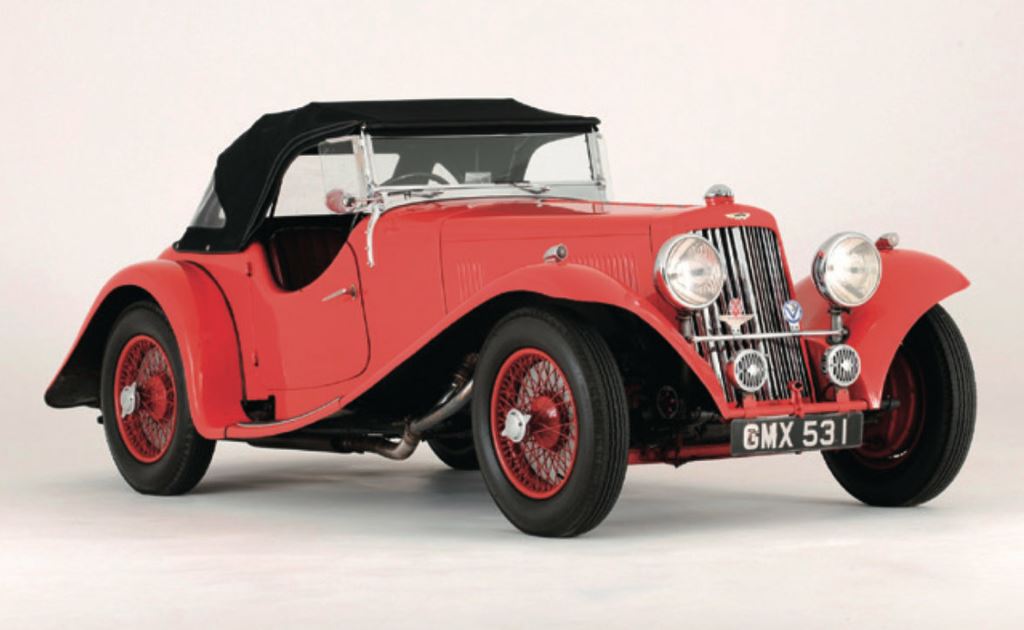
SPECIFICATION
Engine 1949cc, in-line 4
Power 98bhp
Torque n/a
0-60mph n/a
Top speed 85mph
Using the new 2-litre engine in wet-sump form, the 15/98 range (15 from the RAC rating, 98 the peak bhp) included saloons and tourers, but they were heavy and hence slow (slow-selling, too: a planned run of 100 cars was slashed to 50). Better was an attractive short- chassis roadster (pictured). There was also a unique ‘monoposto’ streamlined single-seater designed to go for the 2-litre outer circuit record at Brooklands. The outbreak of war meant it was put into extended storage before its potential could be realised.
Road Cars 1920s-1930s
2-litre Speed/Type C 1936-1940 ↑Top
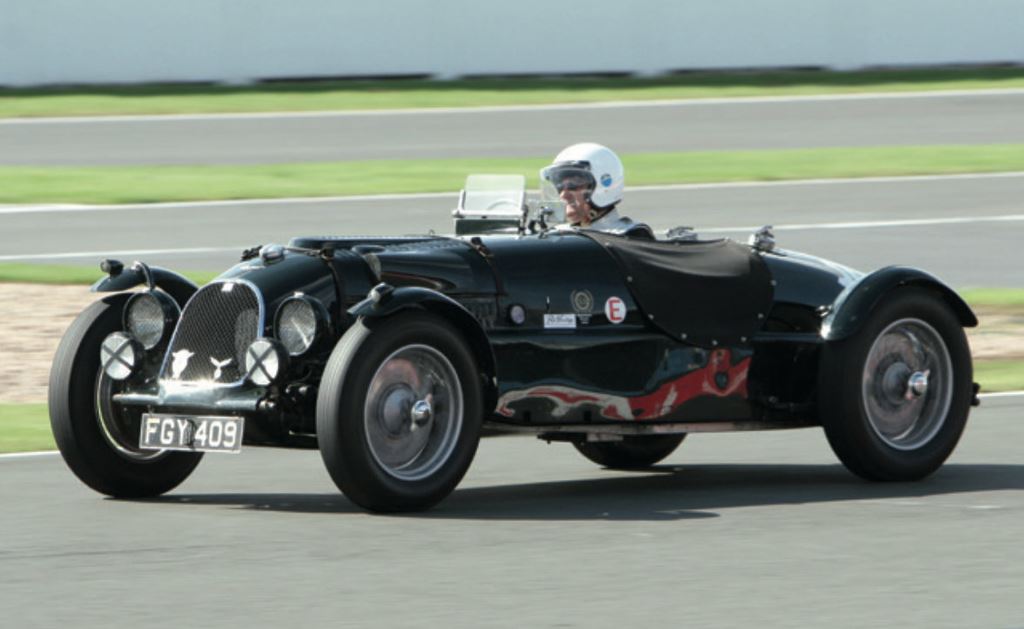
SPECIFICATION
Engine 1949cc, in-line 4
Power 110bhp
Torque n/a
0-60mph n/a
Top speed 95mph
To broaden the appeal of its range, in 1936 Aston introduced a 2-litre engine, based on the 1.5 but with increased bore and stroke and domed pistons. The Speed model was created for the 1936 Le Mans, though in the event the race was cancelled. Some 25 were eventually sold. In 1938 it was decided that eight leftover Speed chassis should be used to create a more ‘modern-looking’ Aston. The resulting Type C, with rather bulbous bodywork, didn’t go down well with enthusiasts and the last one sold at Christmas 1940.
Ulster 1934-1936 ↑Top

SPECIFICATION
Engine 1495cc, in-line 4
Power 85bhp
Torque n/a
0-60mph n/a
Top speed 100mph
Most revered of all the early Astons, the Ulster was named in celebration of the Works racers’ success in the 1934 Tourist Trophy and was effectively a replica of those factory cars. With power now up to 85bhp from the latest version of the 1.5-litre ohc four, it was enough for Aston to guarantee a 100mph top speed. These cars are distinguished by their sleek body and boat-shaped tail, which houses a horizontally mounted spare wheel. Twenty-one Ulsters were built, all of which are believed to have survived.
Third Series (Mk11) 1934-1936 ↑Top
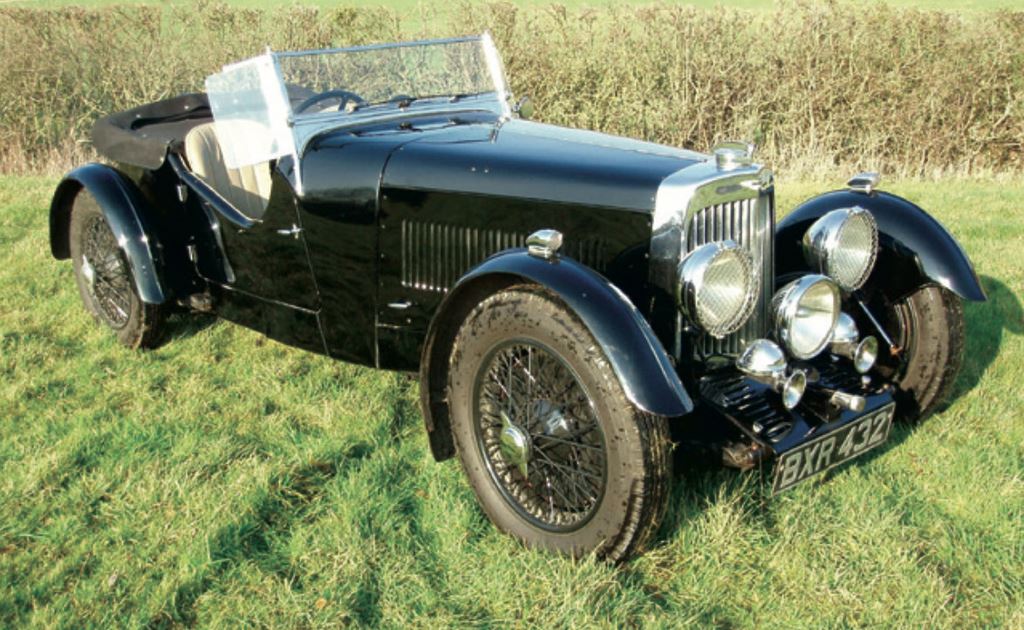
SPECIFICATION
Engine 1495cc, in-line 4
Power 73bhp
Torque n/a
0-60mph n/a
Top speed 85mph
The MkII was a development of the Second Series, intended to be a more useable yet faster version. A new balanced crankshaft assembly and a few other minor mods to the 1.5-litre engine saw peak power rise to 73bhp, though the top speed for the two-seater remained at 85mph. Short- and long-chassis versions were available with a number of different bodies including tourer, two-door saloon and drophead coupe. A short chassis with lightweight body was adopted as the Works car and ultimately became the Ulster.
Second Series/New International/Le Mans 1932-1934 ↑Top
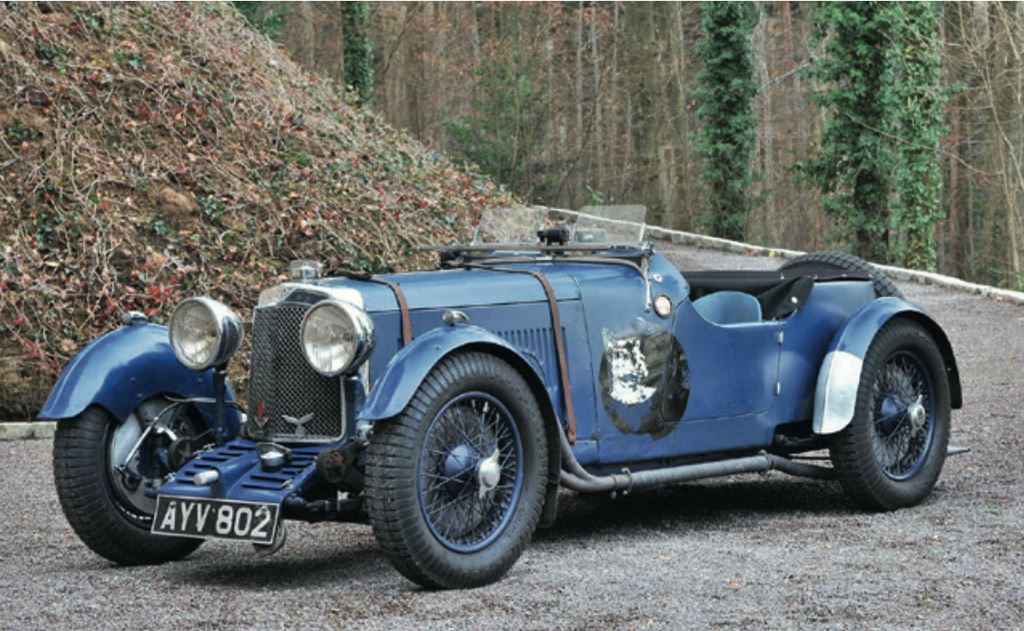
SPECIFICATION
Engine 1495cc, in-line 4
Power 70bhp
Torque n/a
0-60mph n/a
Top speed 85mph
Price reductions, made possible by out-sourcing more components and continuing motorsport success at Le Mans and elsewhere, helped lift sales of what are now known as the Second Series cars. Particularly well received was the Le Mans (above) introduced in 1932. Its high-compression engine pushed power up from 60 to 70bhp. Tourers and saloons were still built but were overshadowed by the sports cars – more than 100 examples were sold of the Le Mans alone. There was also a (much rarer) four-seater version.
First Series/International 1927-1932 ↑Top

SPECIFICATION
Engine 1495cc, in-line 4
Power 56bhp
Torque n/a
0-60mph n/a
Top speed 80mph
With new financial backers, a new factory in Feltham and a new ohc 1.5-litre engine, the era of ‘Bertelli’ Astons began in 1927. There were sports and competition models, and also a tourer and a saloon, while 1929 saw the introduction of the low-slung, dry-sumped International model (pictured), based on the company’s widely successful racing cars of the day. The International was fast and refined but the price was high and sales remained slow. In all, 129 ‘First Series’ cars were produced.
Sports/Super Sports 1920-1925 ↑Top
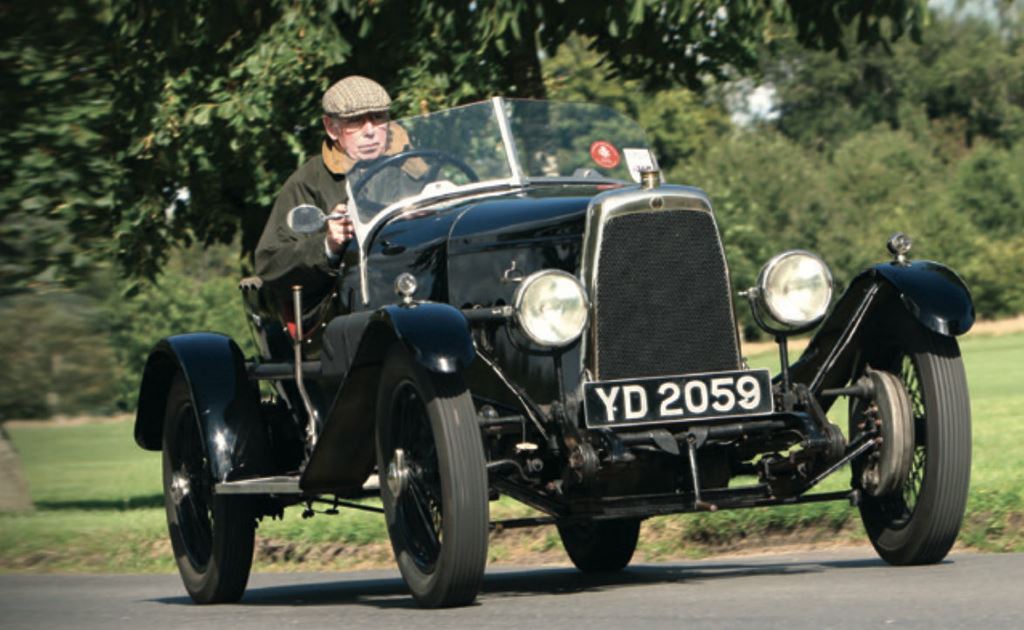
SPECIFICATION
Engine 1.5-litre in-line 4
Power 55bhp
Torque n/a
0-60mph n/a
Top speed 90mph
Although the first ‘Aston-Martin’ had been created in 1915, the Great War meant production didn’t actually start until 1920. And because the early years were all about motorsport, it wasn’t until 1923 that cars went on sale to the general public. The Sports was advanced for its time, with four-wheel brakes and a fully floating rear axle, and in Super Sports form it got a twin-cam, 16-valve four with a lusty 55bhp. Business was tough, though, and after around 60 cars had been sold, the company went into receivership in 1925.

